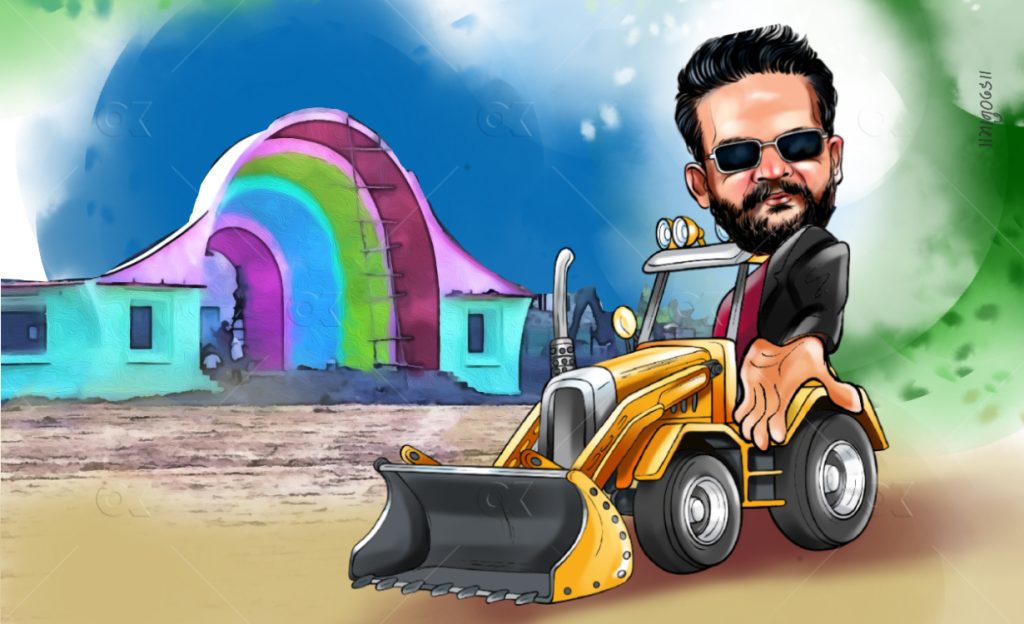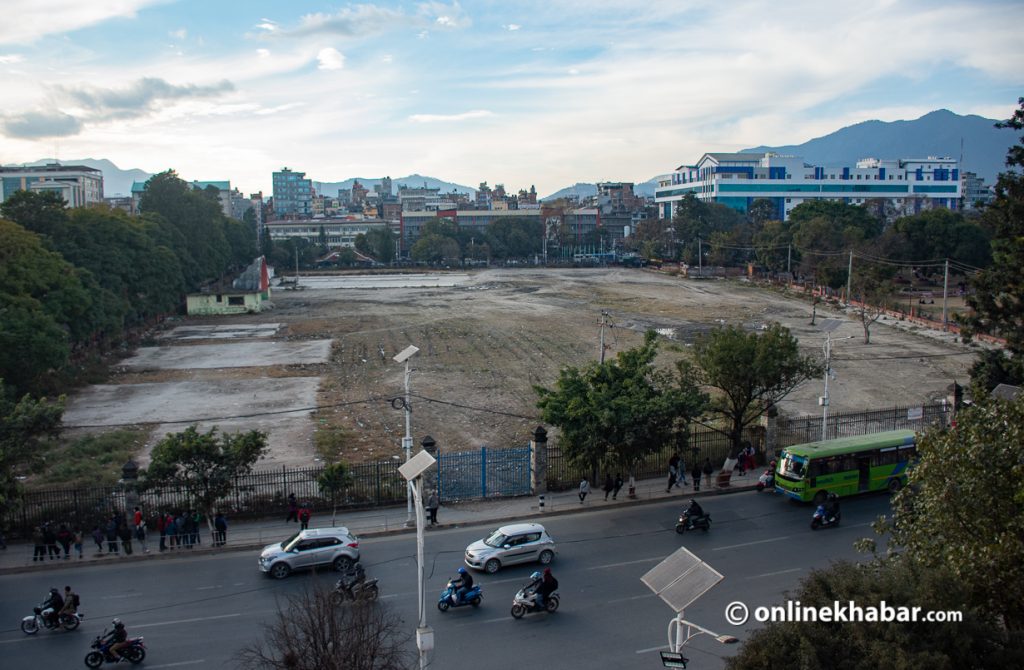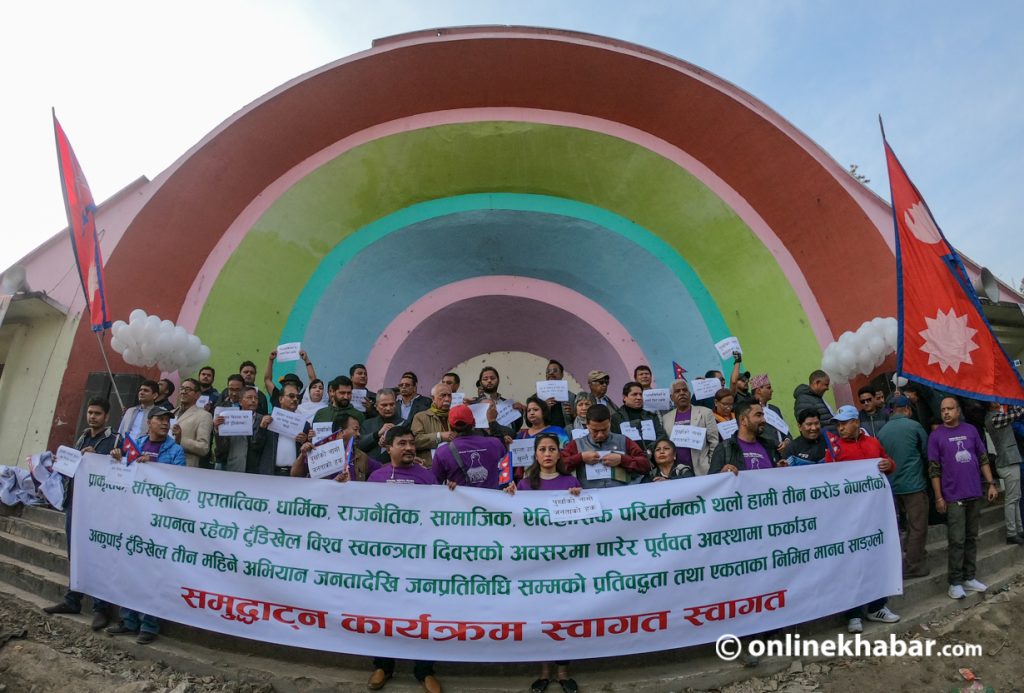
After a referendum was announced in 1980, BP Koirala stood atop Khulamanch, an open ground in central Kathmandu, stating how the country needed a multiparty system and criticising the partyless Panchayat system that was in place during the time.
Koirala, who returned from exile in India in 1977 with the policy of national reconciliation, said that the Panchayat government could no longer take decisions of national importance, hence the system should continue no longer.
The results of the referendum did not meet Koirala’s expectations as the citizens vote for the Panchayat system’s continuity, but after his speech, Khulamanch became known as a place where a Nepali citizen could freely express their views on anything.
Following that, multiple programmes were held at Khulamanch to advocate against the political system of the country.
Those in favour of the Panchayat system also used the same place to express their views. It became more than a place; it became Kathmanud’s major landmark, one that was as revered as the Ghantaghar or the Dharahara.
After the mass movement of 1990, the parties organised a victory meeting there. The victory celebration of the people’s movement of 2006 also happened there.
After leaving the armed conflict and entering the peace process, leaders from the Maoist party also announced their issues and plans through Khulamanch.
The most effective use of the openness of Khulamanch took place during the constitution-making process. At that time, all political parties, big and small, used the place to raise their agenda there.
This shows how much history the place has. But, now, Kathmandu metropolitan city wants to destroy it completely and build a place to park cars.
Attacking Khulamanch’s identity

Kathmandu Mayor Balen Shah has passed a proposal to make an underground parking facility with reverse boring for water recharge at Khulamanch. The construction process will proceed as soon as a study is prepared by the Town Development Fund.
According to Sunil Lamsal, an infrastructure expert of the mayor’s team, internal preparations are currently underway for the construction of underground structures.
“The outer surface has been cleaned by removing garbage and bushes,” he says. “Now, the plan is to address the parking problem of the metropolis by building a structure under it.”
This, many argue, will categorically kill the only place where people could express their views openly without fear.
Pushparaj Adhikari, a professor at the Tribhuvan University Central Department of Political Science, says Khulamanch is a historic place when it comes to politics.
“It was a place people could speak freely at. People even spoke against the Panchayat system there,” he says. “Many historic leaders have stood there and spoken. It’s sad that the city is planning to destroy a major part of its history.”
Devendra Raj Pandey, a citizen activist who has a lot of memory in the area, is irked that the city is planning to destroy one of the few open spaces in the area.
He recalls its vastness that stretched from Ranipokhari to Tripureshwar and calls on everyone to work together to save what remains of it.
“It’s wrong of the city to destroy a place that not only has political history but cultural and social importance too. It’s not just a piece of land; it’s a symbol of openness,” says Pandey.
According to him, Khulamanch is a place where Nepali have expressed their discontent as it has been a political pilgrimage for many over the years.
“It’s a place where the foundations of democracy were laid, but it is quite sad that the saviours of democracy are killing such a place,” says Pandey.
Advocate Sanjay Adhikari, who is involved in the Occupy Tundikhel campaign, says that the city’s plan to build parking in an open space like Khulamanch should be seen as an attack on civil liberty.
“Khulamanch is not only a piece of land but also a symbol of Nepali democracy,” he says. “An attack on such a symbol in the name of increasing parking facilities in the city cannot be accepted by anyone.”
Constant attacks
According to the experts involved in the conservation campaign, the plan of the metropolis to build underground parking in the open is a continuation of the past encroachment of Tundikhel. “Tundikhel has been encroached on by everyone: the government, the army and now the city,” says Pandey. “Our rulers do not realise that the people need an open place to breathe.”
During the reign of King Mahendra, a dabali (open stage) with a khari tree was destroyed. He built an Army Pavilion and Ratna Park, encroaching Tundikhel. The eastern part of Tundikhel was then given to the Nepal Electricity Authority and a bus park was built in the remaining part.

The previous leadership of the metropolis nearly handed Khulamanch to businesspersons and efforts were underway then too to build underground parking. But, as the place became a refuge to hundreds of families during the earthquake in 2015, many realised the need for such an open space.
In January 2015, then Kathmandu mayor Bidya Sundar Shakya allowed the contractors building the 29-story view tower in the Old Bus Park to build temporary shops and rent them out.
After widespread criticism, the shops were removed as was the temporary bus park. As the public realised the city officials were not doing anything to save the country’s open spaces, the Occupy Tudikhel Campaign, was born.
Even though the campaigners called for opening the place to the public, the city padlocked the doors.
After Balen Shah became the mayor, many expected the doors would open, but people were left disappointed when the city’s budget included the building of underground parking. The plan has already been approved by the city council.
The doors to Khulamanch did open during Tihar but that was only to allow people going to New Road to park their vehicles. As soon as Tihar was over, the doors were locked again.
Pandey says that encroachment of public property is being done by everyone in the country. And that is hurting the general public.
Why? Because for the public to do an event in Khulamanch, which literally translates to open space, they need to seek permission from the Nepal Army.
“This doesn’t go right with me,” says writer and water expert Padma Sunder Joshi. “Now the city is making a decision on a whim to build underground parking in such a symbolic place. How are they making these decisions.”
Joshi says the city needs to stop thinking one-dimensionally as the parking issue can be solved in different ways, which firstly starts with making the public transport system better and making walking in the core city early.
“This will help preserve the city’s culture and heritage. We need to think carefully before taking decisions,” says Joshi.
Urban planner Pitambar Sharma says he does not support such a project as he does not think it is scientific and practical in any way in terms of environment, urban transport management and protection of open areas.
In the cities of democratic countries all over the world, there are parks and places where freedom of speech and expression can be used by holding meetings and conferences.
“There is a speech corner in Hyde Park in England, where people go and say whatever they want. Most of the cities in the world have arrangements like this,” says Sharma.
Sharma believes destroying a place like Khulamanch would also kill the people’s freedom of speech, which is guaranteed by the constitution.
“The place is there for a purpose and the city should work on saving it rather than destroying it,” says Sharma.
This story was translated from the original Nepali version and edited for clarity and length.



























